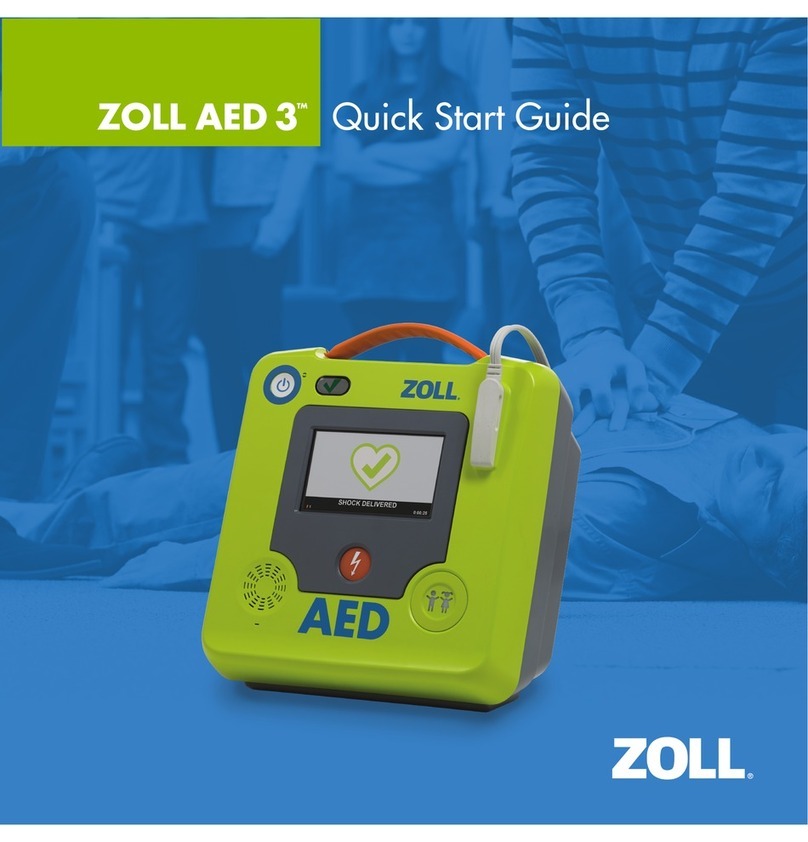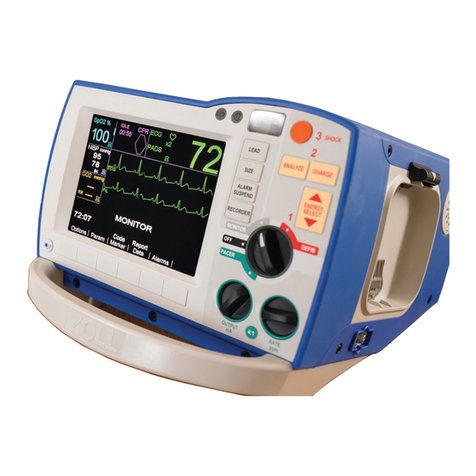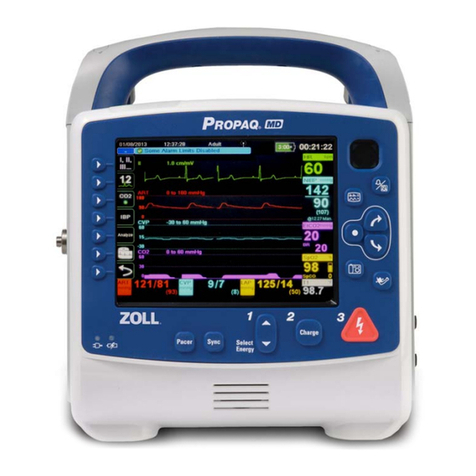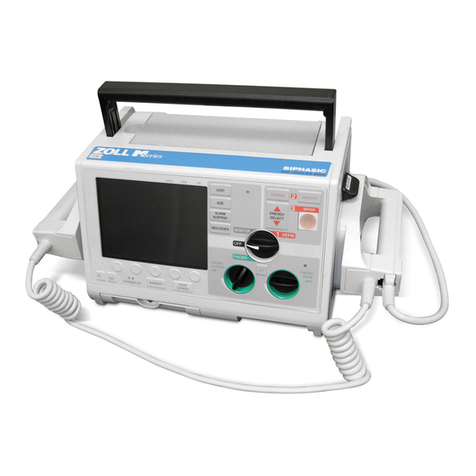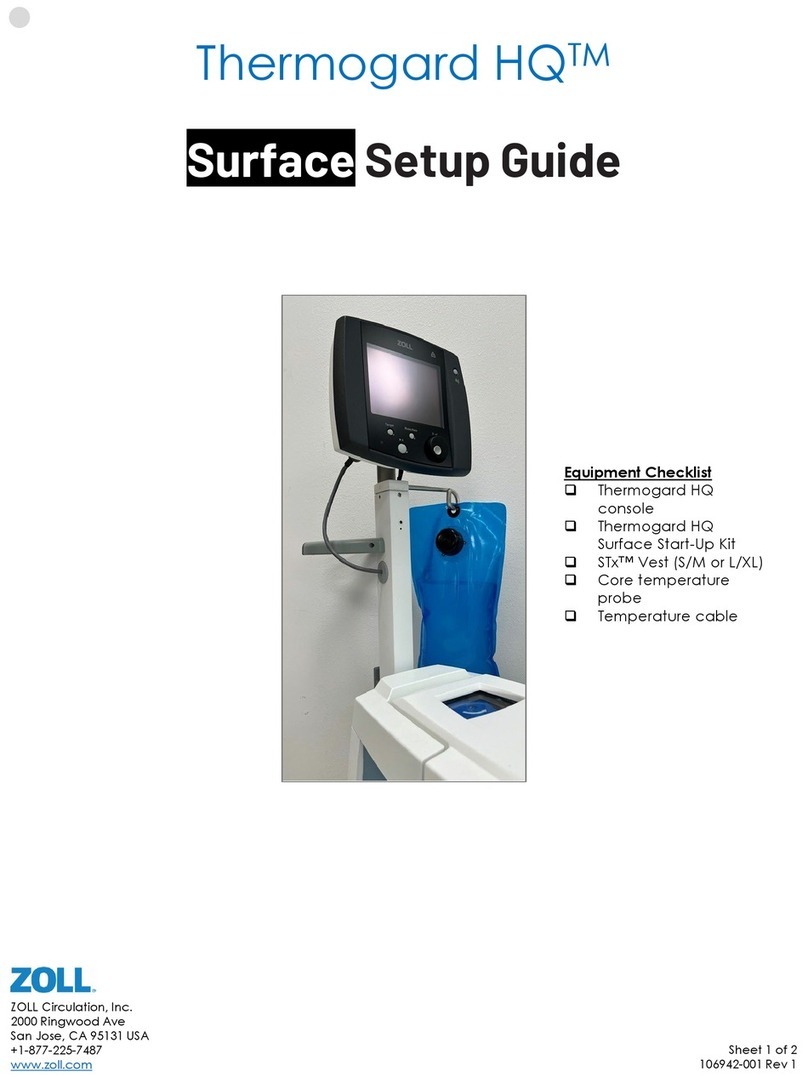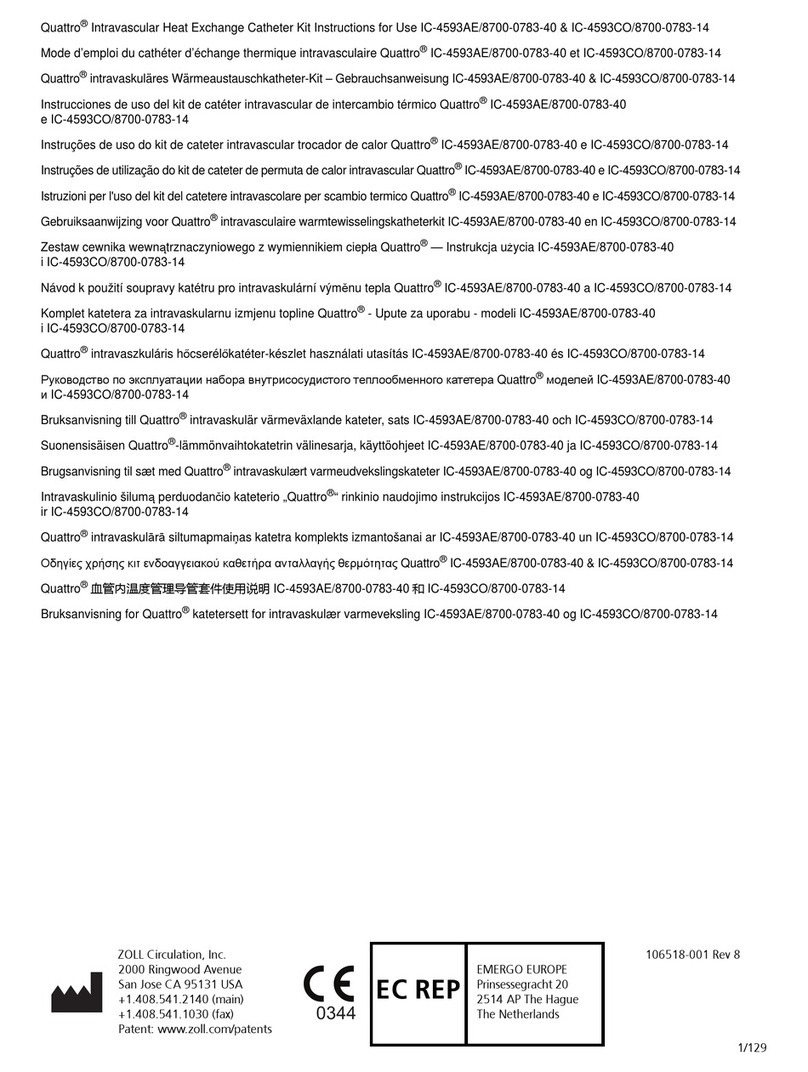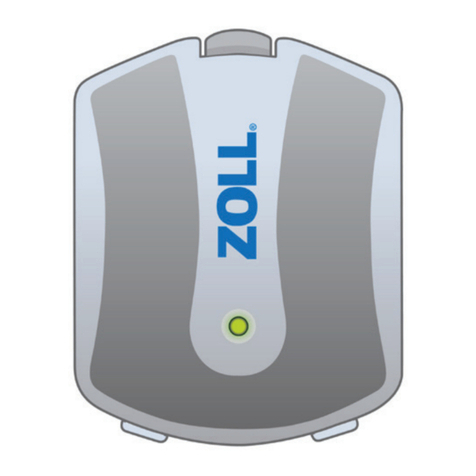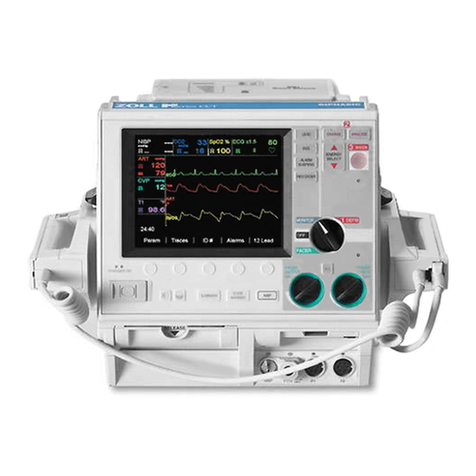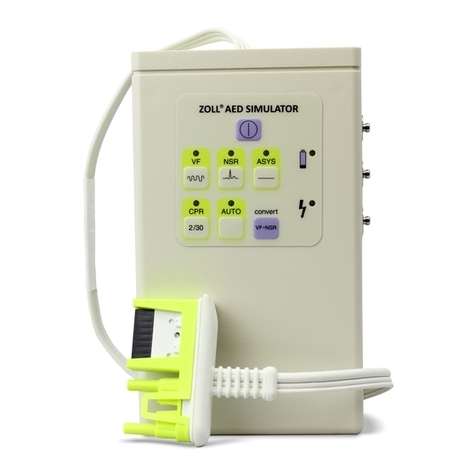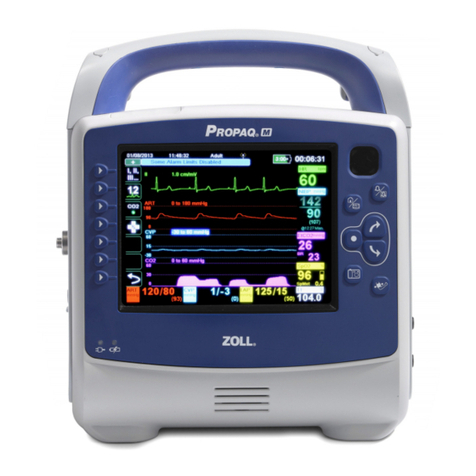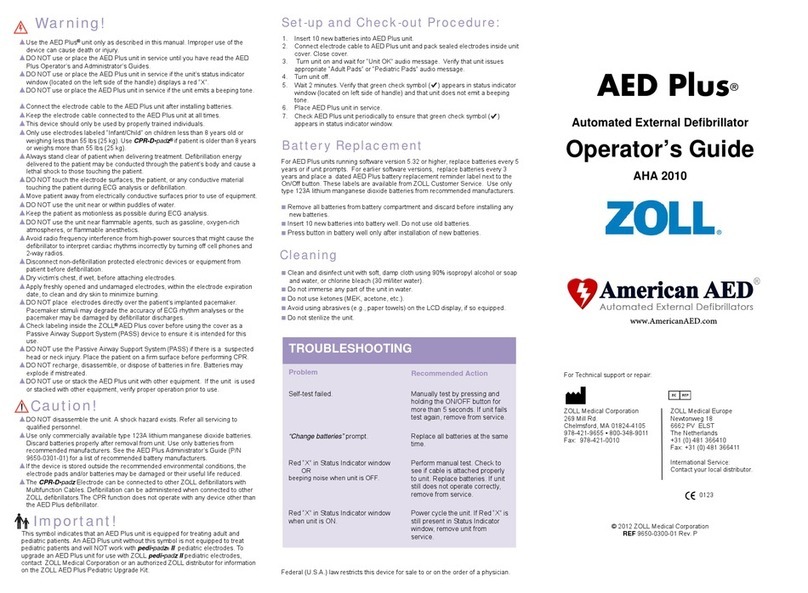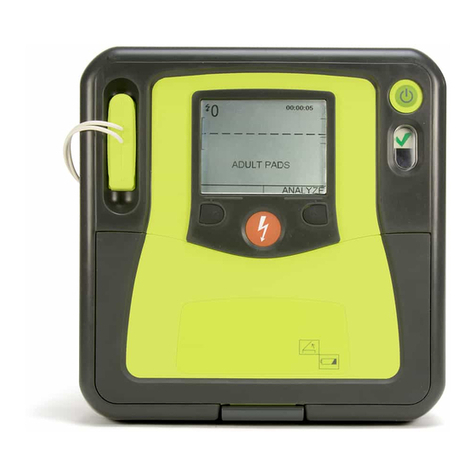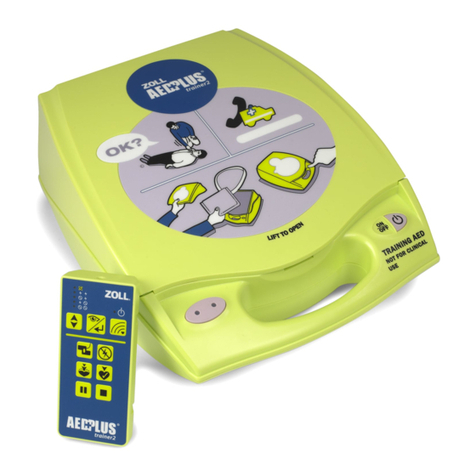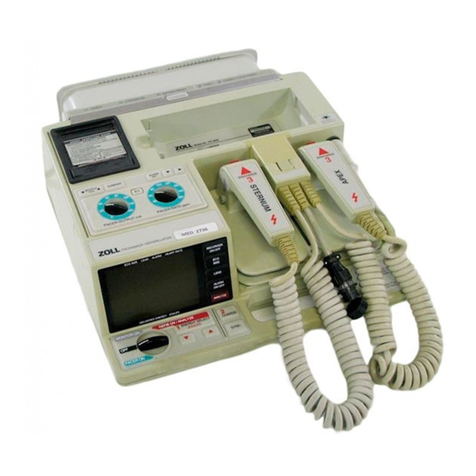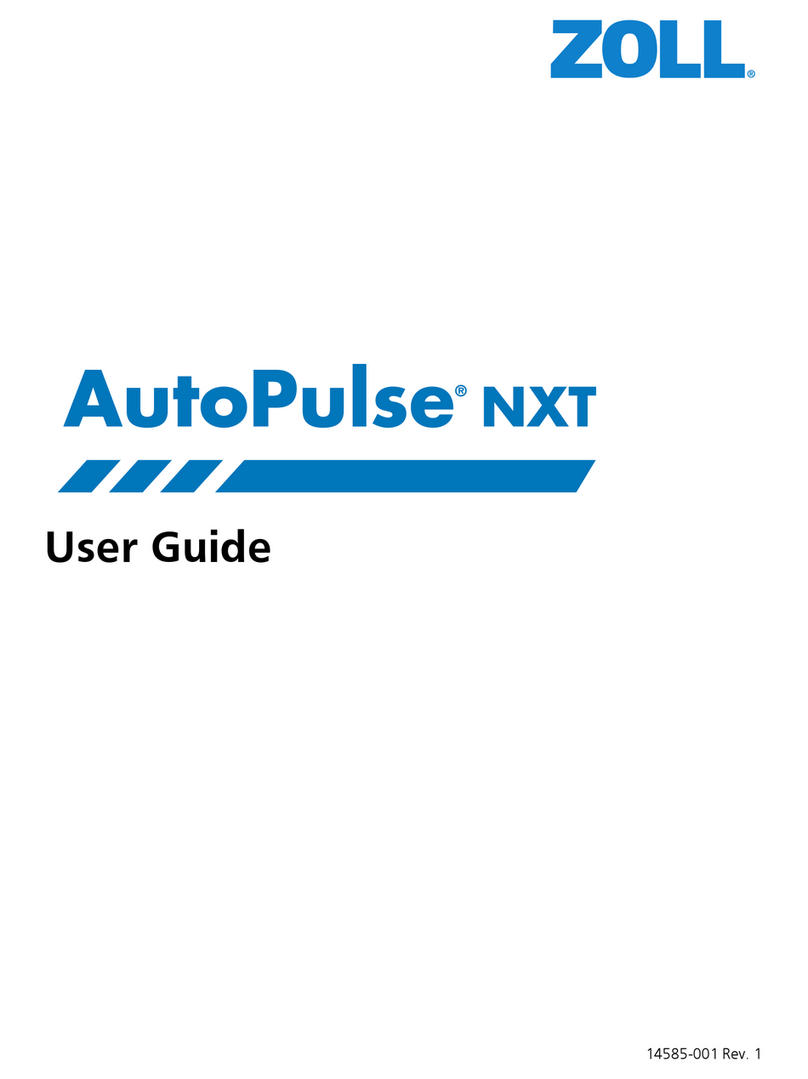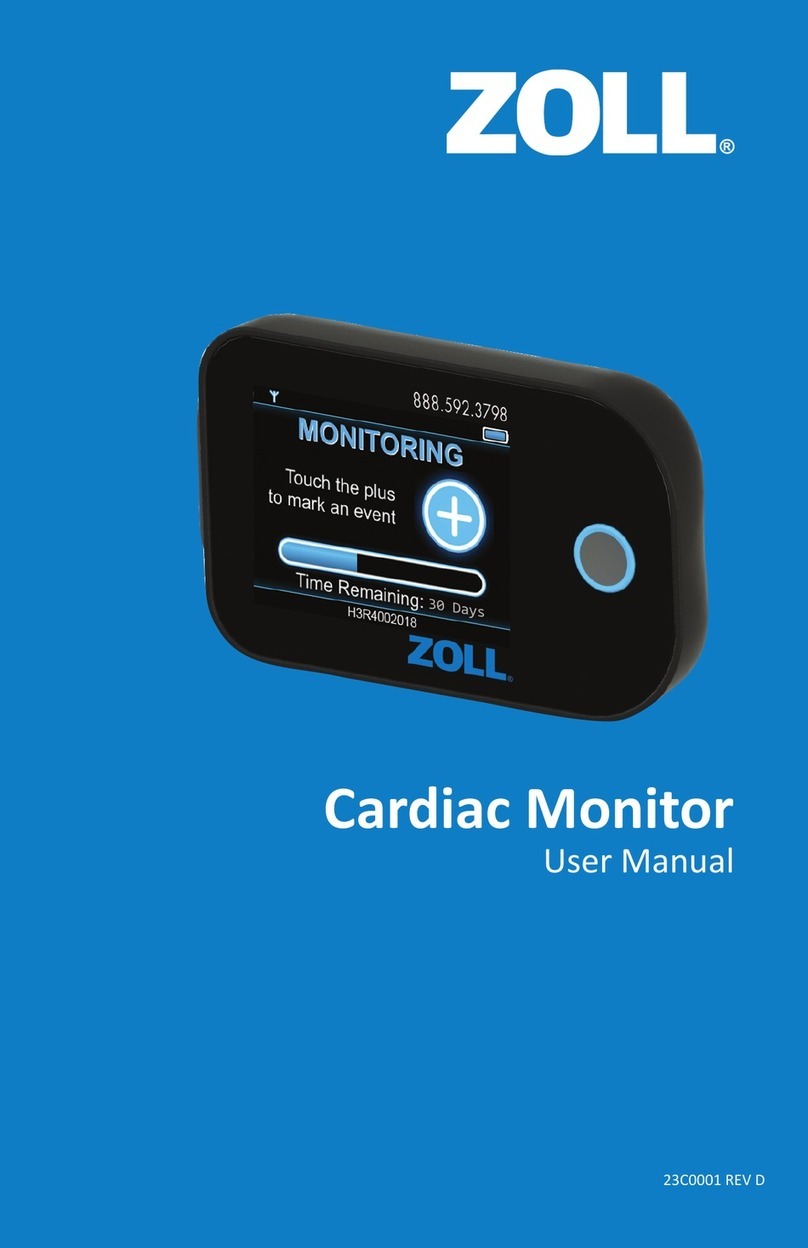
MSERIES OPERATOR’SGUIDE - OPTION INSERT
EtCO2- 4
Warranty (U.S. Only)
(a) ZOLL Medical Corporation warrants to the original
equipment purchaser that beginning on the date of
installation, or thirty (30) days after the date of shipment
from ZOLL Medical Corporation's facility, whichever first
occurs, the equipment (other than accessories and
electrodes) will be free from defects in material and
workmanship under normal use and service for the
period of one (1) year. During such period ZOLL Medical
Corporation will, at no charge to the customer, either
repair or replace (at ZOLL Medical Corporation's sole
option) any part of the equipment found by ZOLL
Medical Corporation to be defective in material or
workmanship. If ZOLL Medical Corporation's inspection
detects no defects in material or workmanship, ZOLL
Medical Corporation's regular service charges shall
apply. (b) ZOLL Medical Corporation shall not be
responsible for any equipment defect, the failure of the
equipment to perform any function, or any other
nonconformance of the equipment, caused by or
attributable to: (i) any modification of the equipment by
the customer, unless such modification is made with the
prior written approval of ZOLL Medical Corporation; (ii)
the use of the equipment with any associated or
complementary equipment, (iii) installation or wiring of
the equipment other than in accordance with ZOLL
Medical Corporation's instructions, (iv) abuse, misuse,
neglect or accident. (c) This warranty does not cover
items subject to normal wear and burnout during use,
including but not limited to lamps, fuses, batteries,
patient cables and accessories. (d) The foregoing
warranty constitutes the exclusive remedy of the
customer and the exclusive liability of ZOLL Medical
Corporation for any breach of any warranty related to the
equipment supplied hereunder. (e) Limitation of Liability:
ZOLL shall not in any event be liable to Purchaser, nor
shall Purchaser recover, for special, incidental or
consequential damages resulting from any breach of
warranty, failure of essential purpose, or under any other
legal theory including but not limited to lost profits, lost
savings, downtime, goodwill, damage to or replacement
of equipment and property, even if ZOLL has been
advised of the possibility of such damages.
THE WARRANTY SET FORTH HEREIN IS EXCLUSIVE
AND ZOLL MEDICAL CORPORATION EXPRESSLY
DISCLAIMS ALL OTHER WARRANTIES WHETHER
WRITTEN, ORAL, IMPLIED, OR STATUTORY,
INCLUDING BUT NOT LIMITED TO ANY
WARRANTIES OF MERCHANTABILITY OR FITNESS
FOR A PARTICULAR PURPOSE.
For additional information, please call ZOLL Medical
Corporation at 1-800-348-9011. International customers
should call the nearest authorized ZOLL Medical
Corporation service center.
Software License
Read this Operator's Manual and License agreement
carefully before operating any of the M Series products.
Software incorporated into the system is protected by
copyright laws and international copyright treaties as
well as other intellectual property laws and treaties. This
software is licensed, not sold. By taking delivery of and
using this system, the Purchaser signifies agreement to
and acceptance of the following terms and conditions:
1. Grant of License: In consideration of payment of the
software license fee which is part of the price paid for
this product ZOLL Medical Corporation grants the
Purchaser a non-exclusive license, without right to
sublicense, to use the system software in object-code
form only.
2. Ownership of Software/Firmware: Title to,
ownership of and all rights and interests in the
system software and all copies thereof remain at all
times vested in the manufacturer, and Licensors to
ZOLL Medical Corporation and they do not pass to
Purchaser.
3. Assignment: Purchaser agrees not to assign, sub-
license or otherwise transfer or share its rights under
the license without the express written permission of
ZOLL Medical Corporation.
4. Use Restrictions: As the Purchaser, you may
physically transfer the products from one location to
another provided that the software/firmware is not
copied. You may not disclose, publish, translate,
release or distribute copies of the software/firmware
to others. You may not modify, adapt, translate,
reverse engineer, decompile, crosscompile,
disassemble or create derivative works based on the
software/firmware.
NO IMPLIED LICENSE
Possession or purchase of this device does not convey
any express or implied license to use the device with
replacement parts which would, alone, or in combination
with this device, fall within the scope of one or more of
the patents relating to this device.
